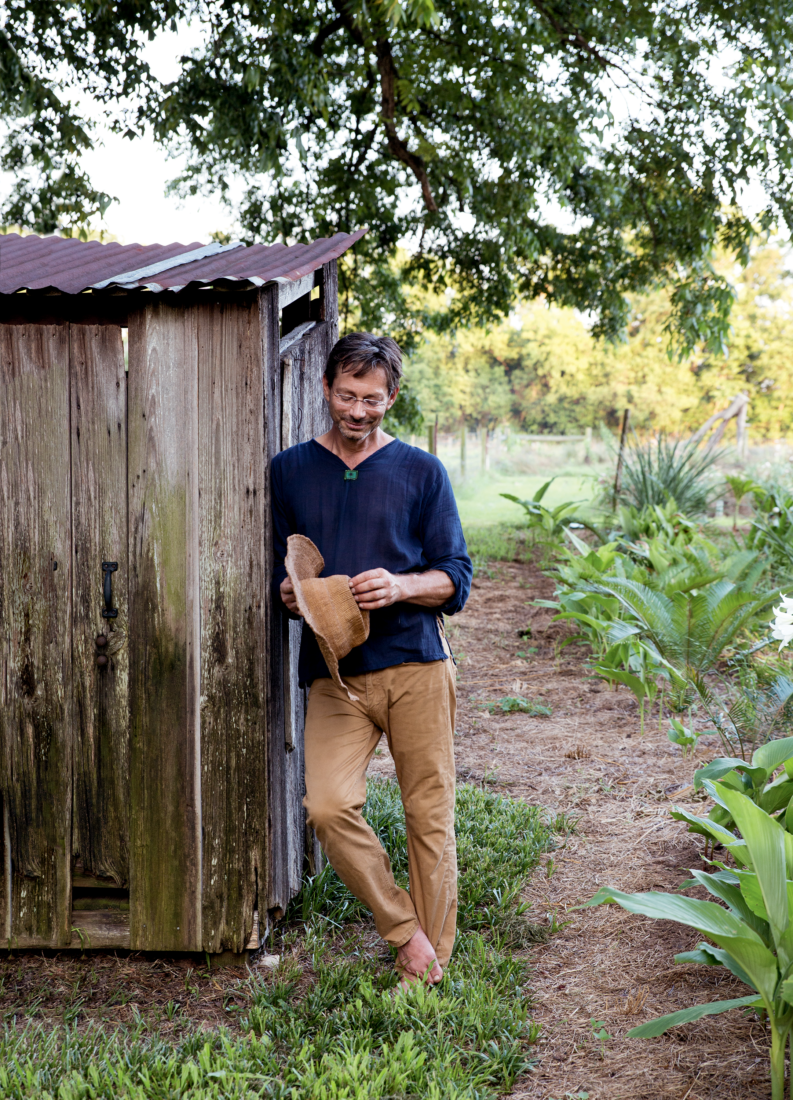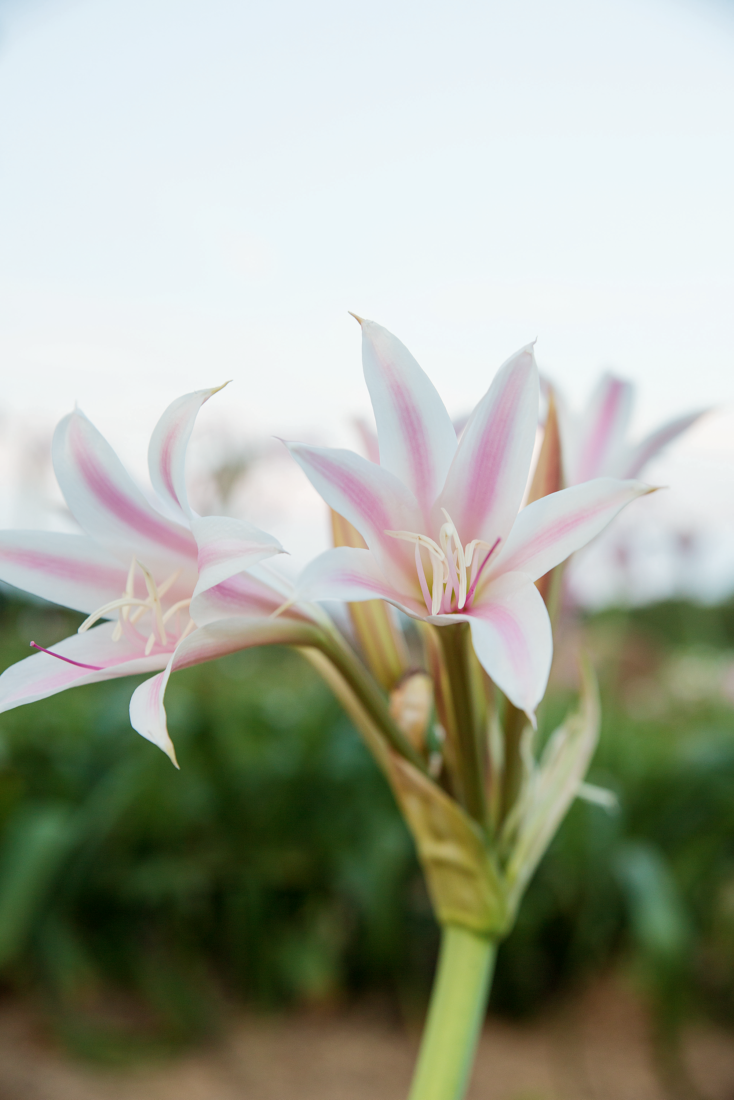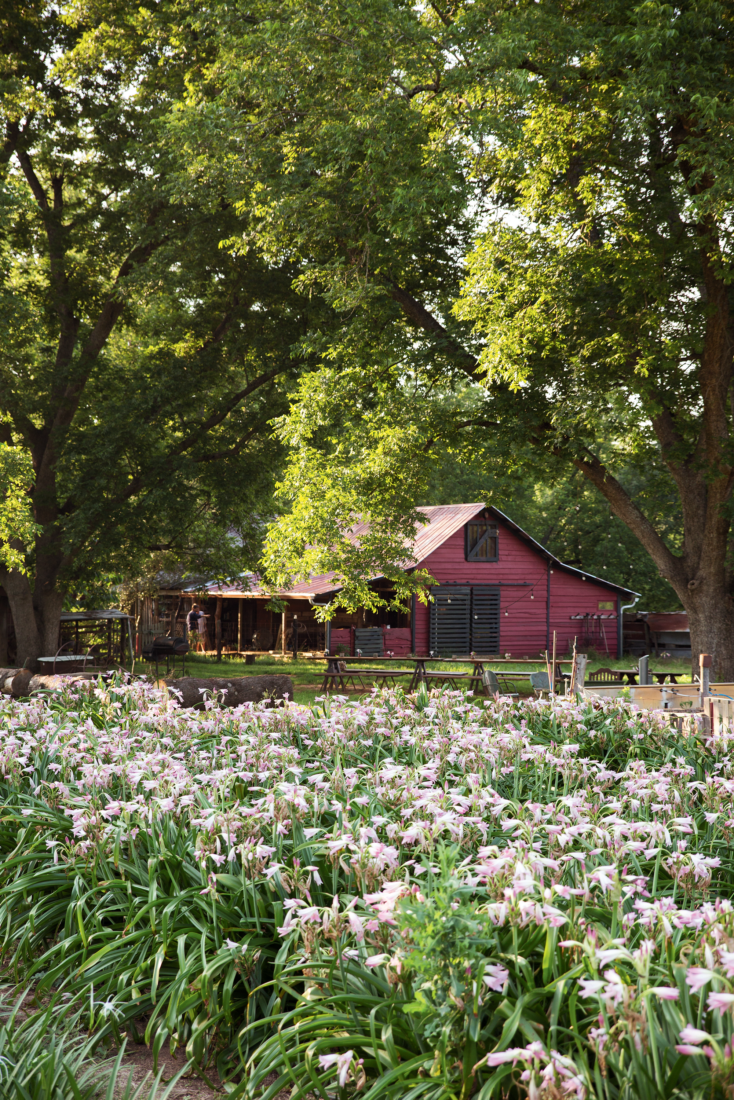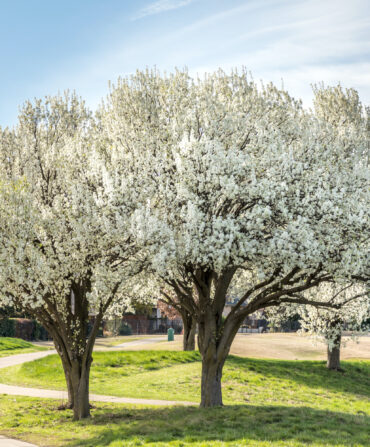On a lonely road, outside an abandoned juke joint, among broken glass and malt liquor cans, lilies bloomed. Nearly five feet tall, with upright white and pink trumpet flowers, the beauties caught the eye of a young plantsman driving down Highway 301 in Allendale, South Carolina.
Augustus Jenkins Farmer III (he goes by “Jenks”) was then the new plant curator of Riverbanks Botanical Garden, an hour and a half north in Columbia. A graduate of Clemson University, he was on a visit home to his family in 1992 when he spotted the flowers outside a forsaken music hall called Regina’s Disco Lounge.

Photo: Margaret Houston
Farmer on the farm.
As it often goes in the rural South, Farmer’s family knew the landowner, and he approved of a rescue mission. Farmer could tell the stand of lilies was robust, but he had no idea until he started digging that the bulbs had propagated heroically. “We got a tractor,” he remembers, “and from the trash pile of bricks and broken glass, we pulled out a four-hundred-pound clump of bulbs.”
Beneath the soil, a winding mass of roots had developed for decades, and aboveground, a special type of lily called a crinum had emerged. The native lily could serve as an apt symbol of Southerners—strong roots; beauty; known to frequent hollers and down-home music venues. But the humble plant hadn’t always gotten respect in certain circles. “Decades ago, you could only find crinum lilies in old country gardens, graveyards, in poor people’s gardens, and in a few serious collectors’ gardens,” Farmer says. So he slowly set about devoting his life to remaking their image. “I’m figuring out how to make crinums fit into modern landscapes. Over time, I’ve planted literally tens of thousands of lilies.”
But before all that, Farmer took some of the Regina’s Disco Lounge crinums back to Riverbanks to root. He also hauled some home to plant on his mother’s farm in Beech Island, the little community from which the musician James Brown famously came. There, in the shadow of the historic Redcliffe Plantation, down an oak-lined lane, Farmer and his partner, Tom Hall, were helping Farmer’s mother, who is now eighty-two, maintain five acres. Farmer grew up playing here among the heirloom roses, amaryllises, and muscadine vines.
Today, nearly a full acre there is devoted to crinum lilies, which Farmer has collected from back roads, abandoned lots, and even cemeteries all over the South. Soaring pink flowers mingle with white trumpeters and giant red blooms, a blanket of flora that blooms from late March to early summer, pauses for the dog days, and then blooms again into the fall. Farmer estimates his oldest lily is eighty years old, and it stands sentinel over some fifty additional varieties. “I have a little one that flowers about four inches tall, opening into a beautiful rich green color,” he says. “Then there’s Lolita, a vibrant pink, who soars to five feet tall.”

Photo: Margaret Houston
The Regina’s Disco Lounge crinum.
More than seventy crinum species grow natively throughout the subtropics, says Farmer, in swamps and near streams. He has seen them on trips to Mexico, Central America, Thailand, and Madagascar, as well as on plant-finding excursions in the South. “The day I realized I had succeeded in collecting a unique and important plant was when I was out in the garden with a group of women,” he says. “There were both black women and white women who said, independently, ‘My grandmother had those’ while pointing at crinums. These plants are a connection, a bridge.”
After establishing the collection at Riverbanks, Farmer went on to design museum gardens and private plots. He worked with the South Carolina businesswoman Darla Moore on her Moore Farms Botanical Garden, all the while maintaining his bulbs to sell to wholesalers and nurseries. His crinums also bloom at Vizcaya Museum and Gardens in Miami, Colonial Lake in Charleston, the Atlanta Botanical Garden, and even within the Philadelphia parks system. A few years ago, Hall encouraged Farmer to focus on a retail operation, and now the two dig up bulbs and ship them, with instructions, to homes nationwide. They mail most bulbs in the late winter and spring so gardeners can plant them after a frost. Some will bloom within weeks; others flower by fall or the following spring.

Photo: Margaret Houston
A field of Cecil Houdyshel crinums.
Over the years, Farmer has lectured widely to plant clubs and even at the Smithsonian, but he’ll always remember speaking to the Allendale Ladies Afternoon Reading Club as a young horticulturist. After he finished, one of the ladies’ husbands lugged in a giant piece of plywood, recently ripped free: That REGINA’S DISCO LOUNGE sign now hangs on the barn at the Beech Island farm, surrounded by its namesake lilies.
Recently, Farmer learned that his hallmark lily had hit another milestone. Regina’s Disco Lounge was tentatively accepted as the lily’s official name by the Royal Horticultural Society, the prestigious British gardening group. Farmer could have told you, long ago, that these bulbs deserved a place among royalty.








